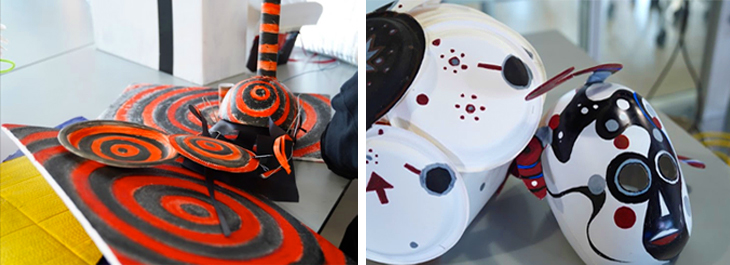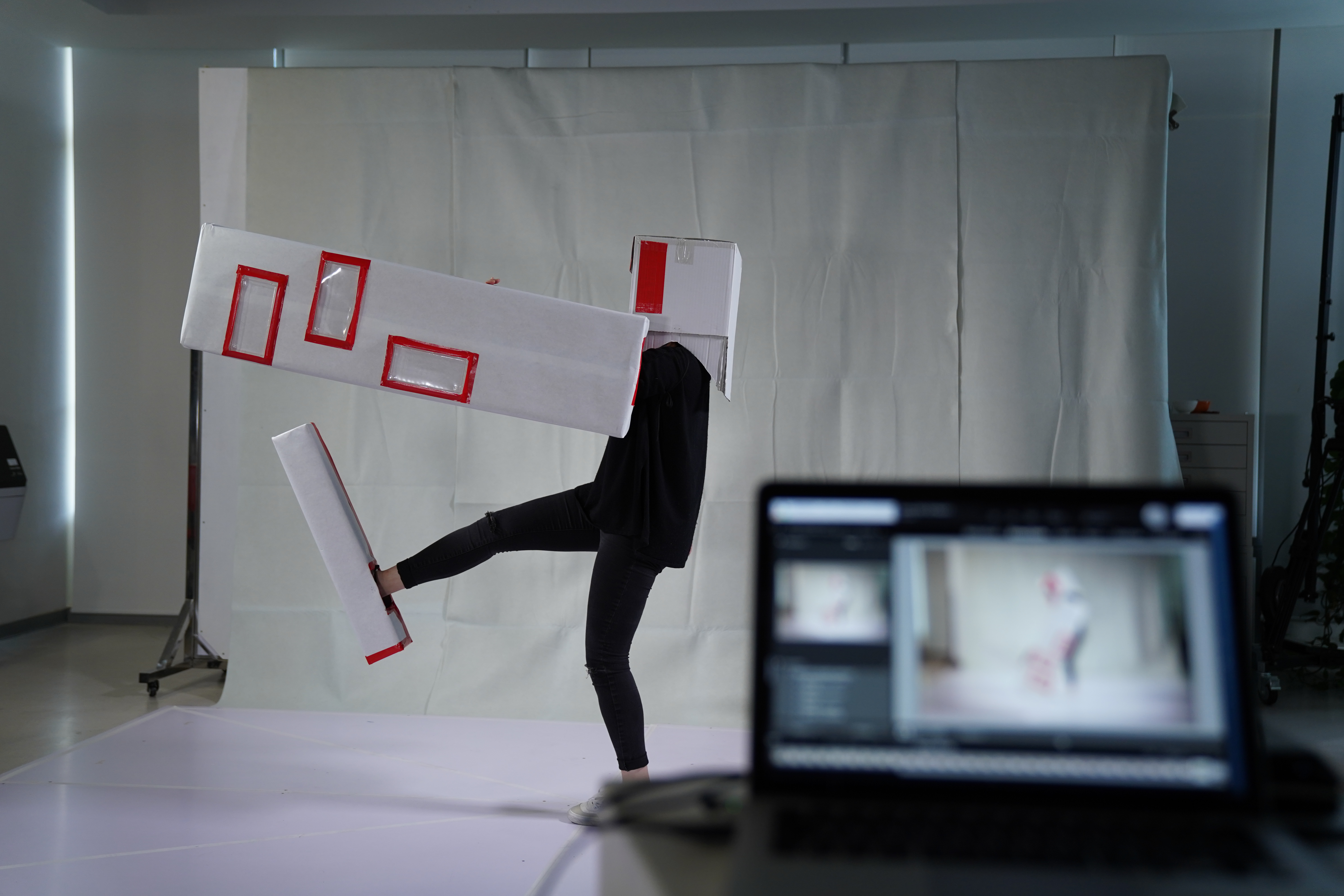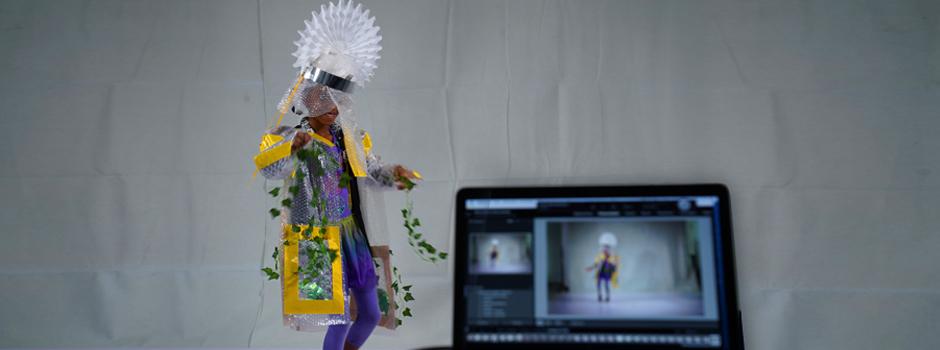The dancers were clad in paper plates, cardboard boxes, and streamers. They wore white masks, wielded painted shields, and carried crepe paper umbrellas. To the steady beat of a drum, they moved slowly across the floor, in unison and yet apart, each focused on the task of dancing within the constraints of their costume.
Wearing their own original Bauhaus costumes, 23 NYU Shanghai students gathered together on campus on a recent Saturday morning to perform this Bauhaus-style work with faculty who had flown in from the Bauhaus Dessau Stiftung institute in Dessau, Germany as part of the Bauhaus OpenStage project.
Bauhaus, the early 20th century architecture movement, is most commonly known for its minimalist design concepts and modern art. The design movement, however, has also been influenced by dance and how people move through a space.

An example of Bauhaus architecture by the movement’s founder Walter Gropius.
As the Bauhaus School and the movement it founded celebrates its 100th anniversary this year, students in Clinical Assistant Professor of Arts Monica Lin and Associate Professor of History Duane Corpis’ printmaking and social theory classes have been exploring Bauhaus in all its forms, including performance art. Students spent the last month focusing on Bauhaus dance and how dance and movement can impact design and the way we interact with the spaces we occupy.
“[Bauhaus] is about bringing the humane and humanity into how we think of design,” Lin said. “Because architecture is about ourselves and about how we feel in a space. How that space affects us as human beings.”
The month of study included a week-long workshop with Bauhaus Dessau’s Senior Academic and Arts Researcher Torsten Blume and his team of artists and researchers with the Bauhaus Dessau Stiftung. Students spent the week building Bauhaus style avant-garde costumes from recycled materials such as cardboard boxes and plastic cups, drawing inspiration for their costumes from the movement they saw in a crumpled piece of paper. The goal, Lin said, was to embody the movement that students discerned from their paper and use that to guide the design of their costumes and the way they danced in the piece.

Examples of student-made costumes and masks.
When Fei Zeping ’20 crumpled her paper, she saw a large fold, which she interpreted as a large movement across her body, carried out by an oversized arm. So, she constructed an arm out of a cardboard box, along with a cardboard box headpiece and shoe.
“It really changes your point of view, the way that you think about shapes and the way it’s translated into movement. It was really interesting, [I had] some sort of profound feelings during the process,” she said.
In addition to the student dance performance, the workshop also culminated with a pop-up photo studio for NYU Shanghai faculty and their families to experience Bauhaus costumes and movement for themselves. NYU Shanghai was one of only a few locations around the world, alongside locations in Germany, Spain, and Japan, to get to participate in the Bauhaus Dessau’s Bauhaus: Open Stage project. Corpis participated in a Bauhaus performance in Dessau in March, after which he and Lin worked with the Bauhaus Dessau Stiftung team to bring the workshop to campus.

Fei Zeping poses with her cardboard box arm, headpiece, and shoe.
Corpis, who participated in a Bauhaus costume photo studio in Dessau earlier this year and was inspired to bring the movement to his students, said the unit was a chance for cross-disciplinary collaboration. Students from the two classes are working together this semester to create a zine that is focused on Bauhaus. Lin’s students will provide the design, while Corpis’ will write pieces for the zine, which will be on display at the student showcase in December.
Much like the zine project, Corpis said Bauhaus is an exploration of cross-disciplines between performance and visual arts and social and political theory, and how the two spheres can influence one another. In Bauhaus, he said, the movement must fit the costume, a task that allowed students to explore how to find freedom within constraints, something that he said can be applied to social, political, or economic theory as well and the ways in which people find freedom within societal constraints.
“Everyone is different but plays by the same rules,” Corpis said. “Everyone has a different costume, but is constrained by their costume. The costumes determine the characters [and] how you can move and interact.”

Professor Duane Corpis (right) interviews Bauhaus Dessau’s Torsten Blume at the event on October 19.
Saturday’s pop-up studio and performance also included an interview with Blume, who encouraged people to explore new movements in their bodies throughout their everyday rituals. Even when doing something as simple as waiting for the bus, he encouraged students to try moving a small piece of themselves, like their shoulder, in a new way to explore the expression and find a new freedom within themselves.
“We can be flexible. We can use ourselves and our body and our existence as a field of experimentation,” Blume said. “Challenge yourself.”


